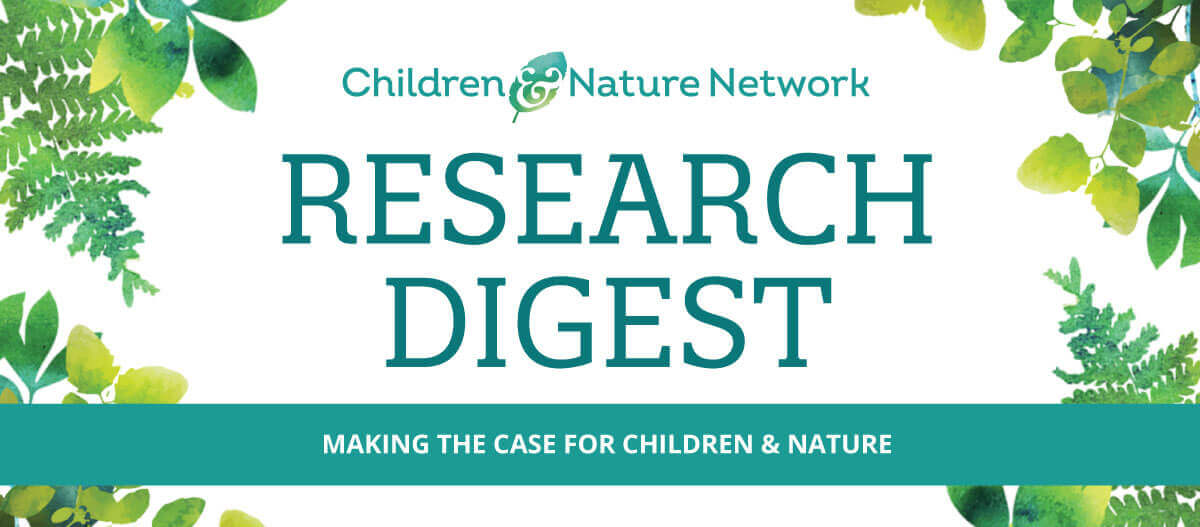CONNECTEDNESS TO NATURE
Connectedness to nature is a multidimensional construct that includes emotions, behaviors, and cognition.
Young children often express connection to nature differently than adults and older children
A review of research reveals unique ways in which preschool children experience and express connection to nature. Approaches and tools for assessing connection to nature in young children are offered.
Beery, Chawla & Leven, 2020. Being and becoming in nature: Defining and measuring connection to nature in young children.
Access Study
Connecting with nature and acting to protect nature can be mutually reinforcing
This review examines two streams of research on connectedness to nature that have progressed independently–one focused on connection as a positive experience and the other on responses to environmental loss– and argues for integration across these research areas.
Chawla, 2020. Childhood nature connection and constructive hope: A review of research on connecting with nature and coping with environmental loss.
Access Study
Childhood and adult nature experiences predict nature connection among adult urban residents
Urban adults–with and without childhood nature experiences–report looking to nature for relaxation. Related research suggests that direct contact with nature at any life stage can promote nature connection.
Cleary et al. 2020. Predictors of nature connection among urban residents: Assessing the role of childhood and adult nature experiences.
Access Study
Nature connection and pro-environmental behaviors are stronger in rural versus urban children in northern Mexico
Reports completed by two groups of Mexican children (one rural, one urban) showed that place of residence was directly and positively linked to pro-environmental behaviors and partially explained by level of connectedness to nature.
Duron-Ramos et al. 2020. The role of urban/rural environments on Mexican children’s connection to nature and pro-environmental behavior.
Access Study
For Canadian adolescents, as electronic media use increases, connection to nature decreases
Surveys completed by Canadian youth (age 10 to 18) show that they prefer electronic technology over time in nature, that the use of electronic technology tends to be addictive, and that some youth perceive indoors as safer and more comfortable than outdoors.
Michaelson et al. 2020. Electronic screen technology use and connection to nature in Canadian adolescents: A mixed methods study..
Access Study
Solitary activities, reinforced by socialization, may best promote connectedness to nature
Self-report surveys indicated that youth who spent time alone in nature weekly were more likely to have high nature connectedness than those spending time outside alone less frequently. Social time seemed to reinforce nature connectedness.
Szczytko et al. 2020. How combinations of recreational activities predict connection to nature among youth.
Access Study
Both biophilia and biophobia are attributes of young children’s connectedness to nature
Two separate studies investigated the emotional attributes of 5-year-old children in Spain. The children responded with both positive and negative emotions to natural images displayed on a computer screen.
Olivos-Jara et al. 2020. Biophilia and biophobia as emotional attribution to nature in children of 5 years old.
Access Study





